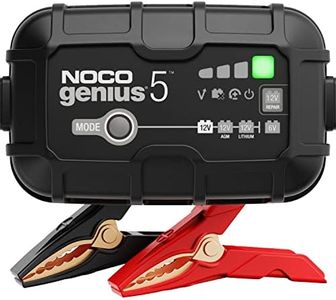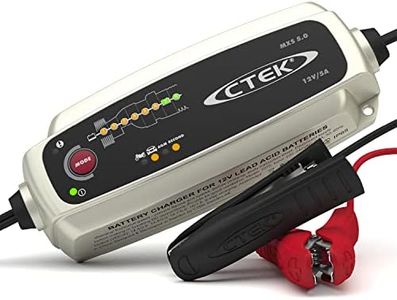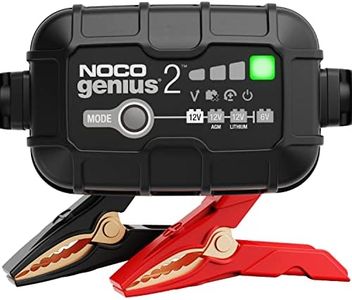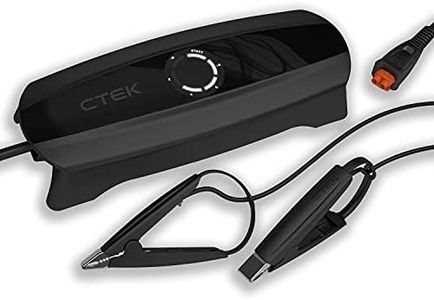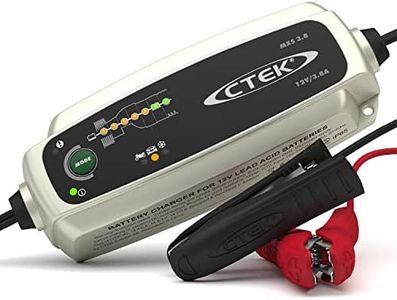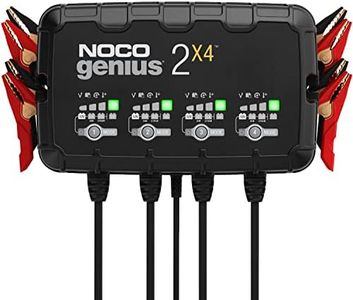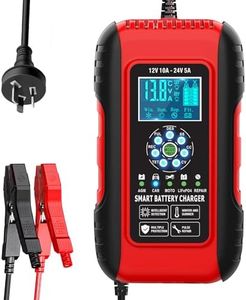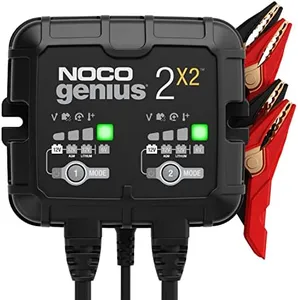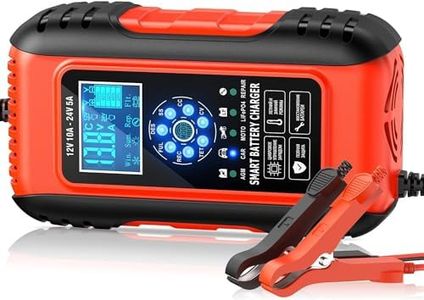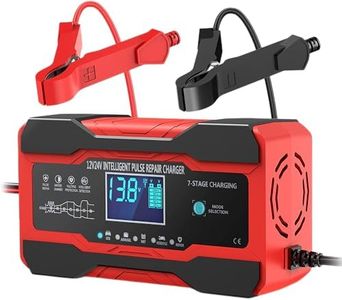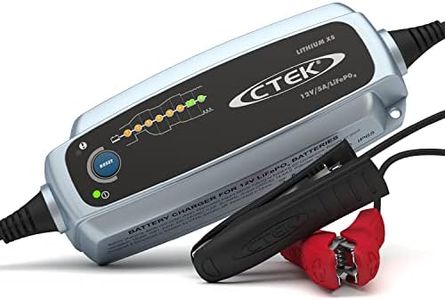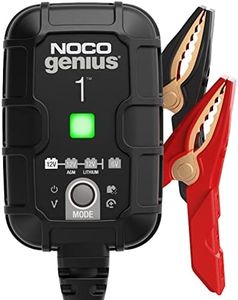We Use CookiesWe use cookies to enhance the security, performance,
functionality and for analytical and promotional activities. By continuing to browse this site you
are agreeing to our privacy policy
10 Best Motorcycle Battery Maintainers
From leading brands and best sellers available on the web.By clicking on a link to a third party's website, log data is shared with that third party.
Buying Guide for the Best Motorcycle Battery Maintainers
Picking the right motorcycle battery maintainer is important for keeping your battery healthy and extending its life. These devices help charge your battery gently and can maintain charge for long periods, especially if you don't use your motorcycle every day. Choosing a suitable maintainer comes down to understanding your motorcycle's battery needs and how and where you usually store your bike. By focusing on a few key specifications, you can make a choice that ensures your battery is always ready to go.Amperage OutputAmperage output means how much electrical current the maintainer provides to the battery. This is important because some batteries charge best with lower amperage, while others can handle more. Maintainers typically range from 0.5 to 2 amps. Lower amperage (0.5–1 amp) is safer for smaller motorcycle batteries or for maintenance charging over long periods, preventing damage from overcharging. Higher amperage (above 1 amp) can recharge a flat battery quicker, but isn't always best for long-term connection. Consider your motorcycle’s battery size and pick a maintainer that matches—smaller batteries are safer with lower amps, while bigger or frequently used bikes may benefit from a maintainer with flexible amperage.
Automatic Shut-Off/Float ModeAutomatic shut-off, also known as float mode, is a feature that senses when your battery is fully charged and then switches to a low-maintenance charge to prevent overcharging. This is important because leaving a battery on charge too long without automatic shut-off can damage it. Maintainers generally have this feature or not—always look for one that does if you plan to leave the maintainer connected for days or weeks, as it will keep your battery safe without constant checking.
CompatibilityCompatibility refers to whether the charger works with your type of motorcycle battery. Batteries can be lead-acid, gel, AGM (absorbed glass mat), or lithium. Not all maintainers are suitable for every type. This matters because using the wrong maintainer can shorten battery life or even cause safety issues. Always check the specifications of both your battery and the maintainer to be sure they are compatible. If you have a more modern or lithium battery, you need a maintainer specially designed for it.
Connection OptionsConnection options describe how you physically attach the maintainer to your battery. Common methods are alligator clips, ring terminals that stay attached for quick connecting, or specialty connectors. This is important because it affects convenience and safety. If you want to connect and disconnect frequently, seek quick-disconnect connections. For bikes that are parked for long stretches, a permanently mounted ring terminal may be more convenient. Think about how often you’ll use it and pick the connection option that matches your habits.
Weather ResistanceWeather resistance means how well the maintainer can handle exposure to moisture or dust. This is key if you plan to use or store it outdoors or in a damp garage. A weather-resistant maintainer is less likely to get damaged. If your motorcycle is stored in a sheltered and dry place, this feature is less critical, but for outdoor or less-protected garages, weatherproofing or at least a splash-resistant design is best.
Safety FeaturesSafety features include protections against reverse polarity, short circuits, and overcharging. They help protect both you and your battery from possible damage or accidents. More basic maintainers may lack these protections, while better ones include warnings or automatic shut-off in unsafe situations. Especially if you are not experienced with batteries or want peace of mind, choose a maintainer with built-in safety features.
